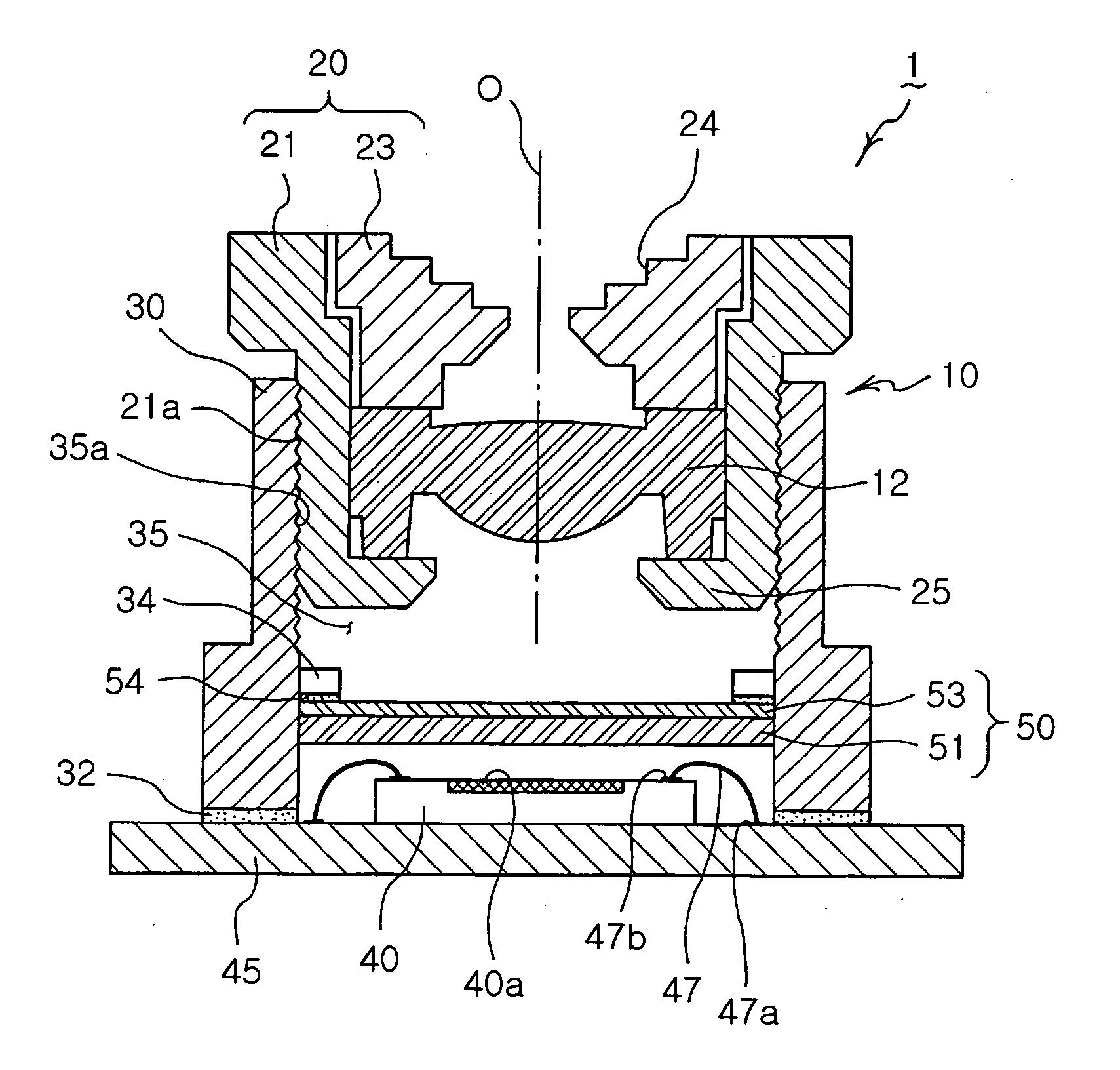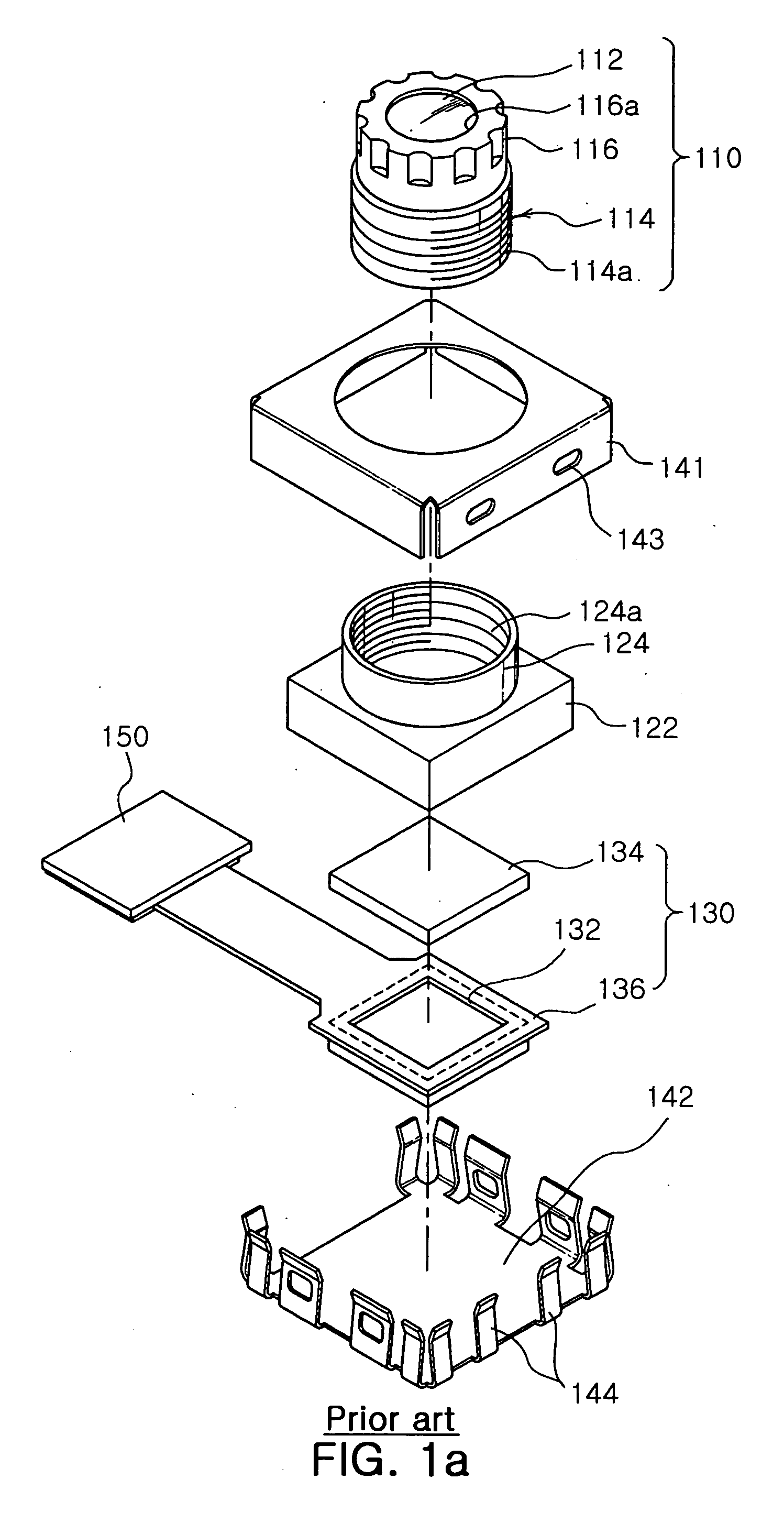Camera module
a technology of camera modules and modules, applied in the field of camera modules, can solve the problems of reducing affecting the focusing arrangement the number of components of the camera module is large, so as to reduce the manufacturing cost of the camera module, simplify the structure, and improve the productivity of the camera module
- Summary
- Abstract
- Description
- Claims
- Application Information
AI Technical Summary
Benefits of technology
Problems solved by technology
Method used
Image
Examples
Embodiment Construction
[0052] Now, preferred embodiments of the present invention will be described in detail with reference to the accompanying drawings.
[0053]FIG. 2a is an exploded perspective view illustrating a camera module 1 according to a first preferred embodiment of the present invention, and FIG. 2b is an assembled sectional view illustrating the camera module 1 according to the first preferred embodiment of the present invention.
[0054] As shown in FIGS. 2a and 2b, the camera module 1 according to the first preferred embodiment of the present invention comprises a lens array 10, a lens accommodating unit 20, a housing 30, an image sensor 40, and a filter 50.
[0055] The lens array 10 includes at least one lens 12 arranged along the optical axis O and disposed in the lens accommodating unit 20.
[0056] Preferably, a plurality of lenses 12 may be arranged in the lens accommodating unit 20. In this case, spacers are disposed between the respective lenses 12 such that the lenses 12 are spaced unifor...
PUM
 Login to View More
Login to View More Abstract
Description
Claims
Application Information
 Login to View More
Login to View More - R&D
- Intellectual Property
- Life Sciences
- Materials
- Tech Scout
- Unparalleled Data Quality
- Higher Quality Content
- 60% Fewer Hallucinations
Browse by: Latest US Patents, China's latest patents, Technical Efficacy Thesaurus, Application Domain, Technology Topic, Popular Technical Reports.
© 2025 PatSnap. All rights reserved.Legal|Privacy policy|Modern Slavery Act Transparency Statement|Sitemap|About US| Contact US: help@patsnap.com



